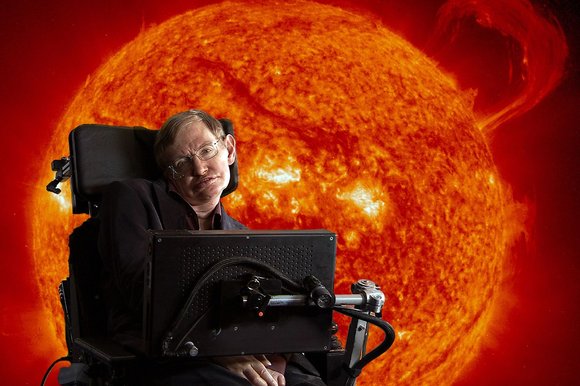Ahead of the Starmus Conference, Stephen Hawking writes today:
7 September 2014 by Jonathan Leake, Science editor

Hawking’s prediction would need an accelerator bigger than Earth to test, but scientists are
excited by the theoretical implications (Discovery Channel)
THE Higgs boson, once hailed as the God particle, may actually have the potential to destroy the universe, Professor Stephen Hawking has warned.
He suggests that, at very high energy levels, the Higgs could suddenly become unstable, causing a “catastrophic vacuum decay” that would cause time and space to collapse.
Such a disaster is, he stresses, very unlikely — and the fact that such a possibility even exists is exciting because it suggests a whole new realm of physics.
Hawking’s comments are contained in his preface to a new book, Starmus, out next month, containing lectures by renowned cosmologists and astronomers first given at a scientific conference of the same name.
In his preface, he says: “The Higgs potential has the worrisome feature that it might become metastable at energies above 100bn giga-electronvolts (GeV).
“This could mean that the universe could undergo catastrophic vacuum decay, with a bubble of the true vacuum expanding at the speed of light. This could happen at any time and we wouldn’t see it coming.”
Other scientists may be concerned at Hawking’s comments, not because he is wrong but for fear it might alarm the taxpaying public, which funds their experiments.
In particle accelerators, scientists push subatomic particles to ever-higher energies, using powerful magnetic and electric fields to accelerate them to near light-speeds, before smashing them together.
The idea of such experiments is to try to spot all the fragments coming out of such a collision, measuring their speeds, angles and energy levels in the hope that, once in a while, they will yield something new to science.
This is how, in 2012, scientists at Cern discovered the Higgs boson, by accelerating two beams of protons in opposite directions around a 17-mile ring of superconducting magnets and then smashing them together.
After many trillions of collisions, they found a few hundred where the debris ejected by the collisions was anomalous — suggesting the particles had finally generated the elusive particle first predicted by British physicist Peter Higgs in the early 1960s. The particle and its associated “Higgs field” are thought to be the mechanism that gives matter its mass.
Cern’s success means there is now pressure to build machines that are bigger and far more powerful. The Large Hadron Collider (LHC)at Cern is itself undergoing an upgrade that will double its power.
Hawking, however, suggests there is little danger to humanity or the universe yet — because the power of even the biggest planned machines is so far below what theory predicts would be needed to destabilise the Higgs field.
In the Starmus preface he adds, perhaps ironically: “A particle accelerator that reaches 100bn GeV would be larger than Earth, and is unlikely to be funded in the present economic climate.”
However, he goes on to suggest that the knowledge to be gained by finding out if the Higgs destabilises at high energies is too great to be ignored, saying: “If the Higgs potential is metastable, it places important constraints on the evolution of the universe.”
The best alternative approach, he suggests, is to look back at the very early universe, just after the Big Bang, when it went through a period of expansion known as inflation, during which the energies needed to disrupt the Higgs field might have been generated — and whose effects could still be seen today in the form of gravitational waves, a phenomenon that several teams are competing to detect. “Gravitational waves . . . could give us a unique view of the creation of the universe,” he said.
Hawking will today embark on a cruise from Britain to Tenerife where he will give two talks to the next Starmus conference (starmus.com), one on black holes and another on the origin of the universe.
Professor John Ellis, a theoretical physicist at Cern, said Hawking was right to suggest that the Higgs could become unstable at very high energy levels. “This is not an issue of risk. It illustrates something exciting, that there is new physics yet to be discovered.
“One thing should be made clear. The discovery of the Higgs boson at the LHC did not cause this problem, and collisions at the LHC could not trigger the instability, because their energies are far too low.”